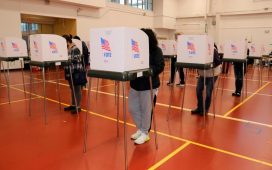The legalities surrounding equine massage are anything but soothing these days.
That’s one of the takeaways from a presentation before attorneys at the University of Kentucky’s National Conference on Equine Law last week. Dr. Amanda Weaver, associate at Snell & Wilmer, presented attendees with an overview of the laws governing the practice of equine massage in the United States, and much like horse racing, there’s a lot of variability in what’s permitted depending upon where you are.
Alternative therapies like massage, acupuncture, and touch therapy, along with therapeutic modalities like PEMF or laser treatments, have gained popularity on and off the racetrack in recent years. That has left many states grappling with questions about whether and how to regulate practitioners of those therapies.
The degree of regulatory hoops an equine masseuse must jump through depends largely on whether their state considers massage a type of veterinary medical practice.
Weaver narrowed her focus to equine massage, noting that depending upon the language of particular state law her comments could apply to other therapies beyond massage. Some states refer to “equine massage” and others talk about “equine massage therapy” and the addition of “therapy” sometimes makes it more likely a state will think of the practice as a medical procedure.
The dictionary definition of “therapy” indicates it’s a remedy for a disorder – but what, Weaver questioned, qualifies as a “disorder”? A diagnosed injury or illness clearly would, but what about some unilateral stiffness as a horse warms up, or a slightly sore muscle free of injury? That also raises questions about activities we don’t think of as therapy addressing disorders but which could legally fall somewhere on this spectrum, too. Could Reiki, a Japanese form of energy healing, become considered a therapy? What about the work of a custom saddle fitter, who would be feeling a horse’s back for sensitive touch points while determining equipment fit?
On a practical level, the degree to which massage resembles a veterinary treatment probably falls somewhere between chiropractics, wherein there is specific manipulation of joints taking place with high-energy, low-amplitude thrusts, and touch therapy, which is an energy-based practice where the therapist may simply move their hands over the horse’s body. Massage does involve manipulation to superficial soft tissues through direct touch, but isn’t operating at quite the same depth as chiropractics.
The easiest guide for what is and isn’t a veterinary medical practice should be the model practice act put out by the American Veterinary Medical Association. Much like the ARCI model rules, some states have chosen to adopt the model act, while others have stuck to their own existing rules. A 2019 version of the AVMA model practice act does indicate that the “use of complementary, alternative, and integrative therapies” are a form of veterinary medicine, and while it gives specific examples, those examples don’t include equine massage. The model practice act makes clear that the professional organization wants alternative therapies regulated by someone, preferably the state’s veterinary medical board.
“Otherwise, the state has no authority to discipline an individual causing harm, whether the individual is a veterinarian or not,” pointed out Weaver.
In a survey of all 50 states, Weaver found that 13 do provide direct guidance on the question, specifying in their law that animal massage is not a form of veterinary medical practice. Five states provide direct guidance that massage is a form of veterinary medicine. Four provide guidance specifying that equine massage doesn’t fall under the purview of the vet board, but rather should be overseen by those states’ massage boards. Twenty-four states provide no guidance at all. Seven have veterinary medical boards which have adopted positions (but don’t have laws stating) that massage isn’t a veterinary practice, and one (New Jersey) has a veterinary board which has adopted a position that it is a veterinary practice.
Some states that consider massage to be a form of veterinary medicine may allow non-veterinarians to practice it, but require masseuses operate under the supervision of a licensed veterinarian. The difficulty with that, Weaver said, is that “supervision” is often poorly-defined. It’s not clear whether the veterinarian needs to be present for the work, and if they do not, what the legal requirements are for the veterinarian to delegate the work to the masseuse.
Beyond that, it’s also not always clear whether an equine masseuse needs to carry liability insurance in case something goes wrong during a treatment, and if they’re working under the supervision of a licensed vet, whose insurance is covering what.
There have been a few civil lawsuits in recent years based around questions of how equine massage should be regulated. In 2008, an equine masseuse received a cease-and-desist letter from the state’s board of veterinary medicine and board of chiropractic examiners, accusing the masseuse of operating illegally because they were not licensed by either board. The veterinary board dropped out of the case quickly, but the chiropractic board kept pursuing the suit. Ultimately, the courts ruled that the boards lacked the authority to issue a cease-and-desist, and operated illegally in shutting down the massage business.
Likewise, a 2014 lawsuit in Arizona challenged the veterinary board’s interpretation and enforcement of its codes. That case ended with the board agreeing not to enforce veterinary regulations against animal masseuses unless a legislative change required it. The board then posted an explanation on its website defining what constituted equine massage.
In New York, a 2018 case was recently dismissed due to statute of limitations issues after a masseuse received a call from the state’s Office of Professional Discipline stating she was offering veterinary services illegally and also that she couldn’t use the word “massage” in the name of her business.
Weaver advised attorneys that in the face of different state regulations, the best course of action is to advocate for really clear guidance.
“I think it’s appropriate here to stay agnostic about advocating for any particular normative perspective on whether equine massage is more properly considered something like a livestock management practice or something similarly unregulated, or if it’s a therapy or treatment and therefore considered to be the practice of veterinary medicine,” she said. “Instead, I want to at least posit for consideration that a notice-based model for any particular state would notify all stakeholders appropriately.
“Making that information as easy to find as possible would also have a corollary assistive effect on reducing harm to the public by informing practitioners of their duties in that particular state.”
The post Lots Of Different Rules, Not Much Uniformity On Licensing Requirements For Equine Massage appeared first on Horse Racing News | Paulick Report.








